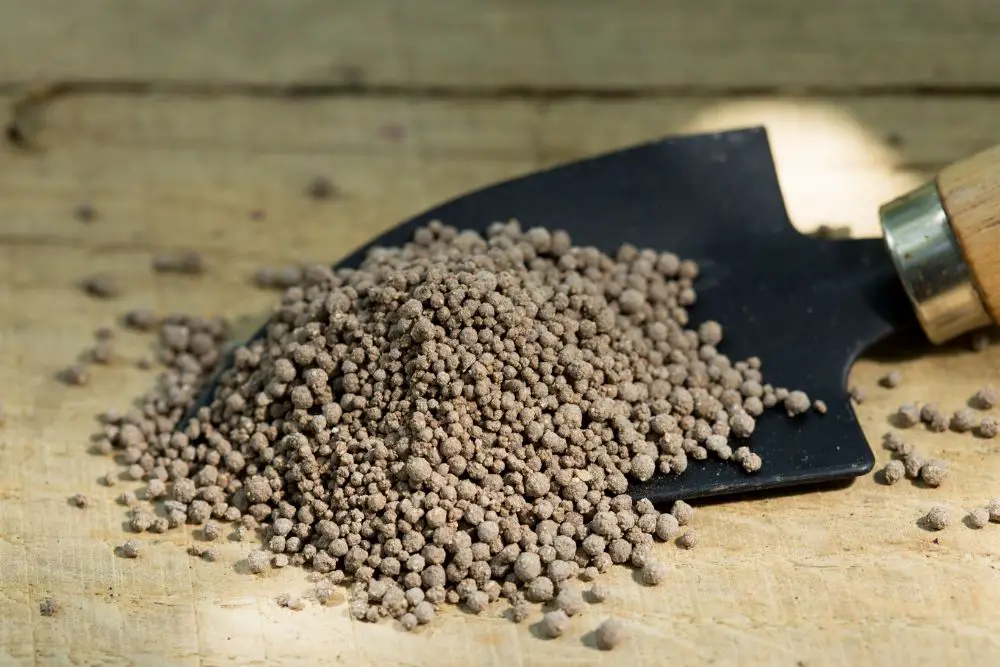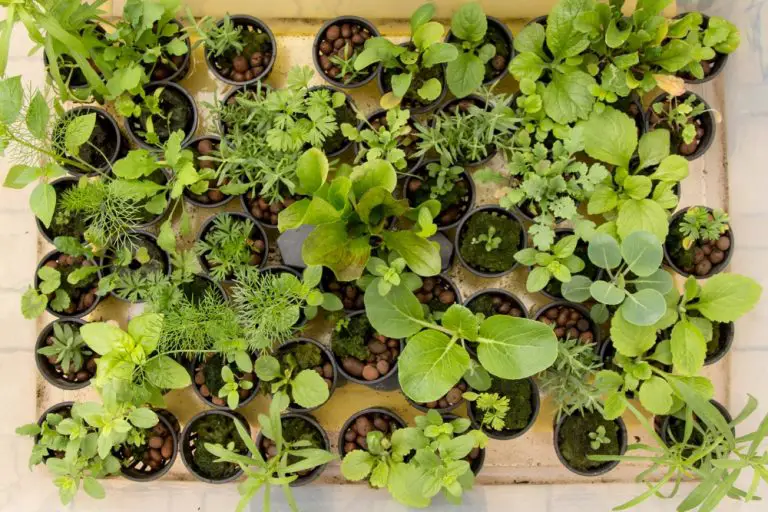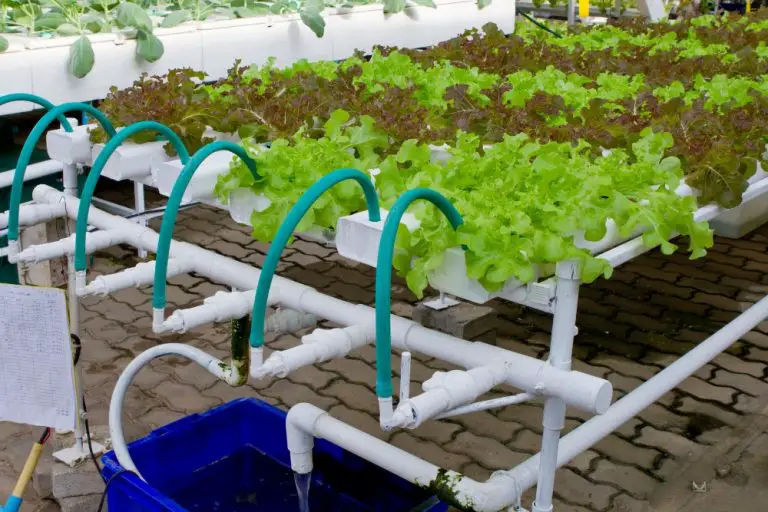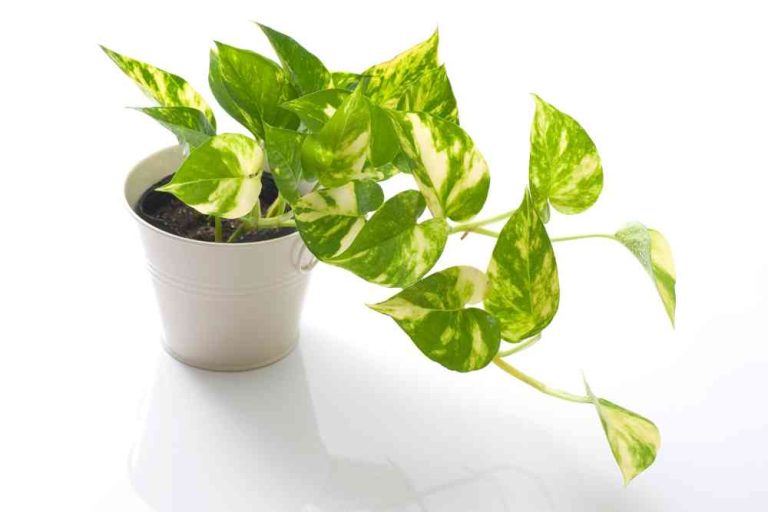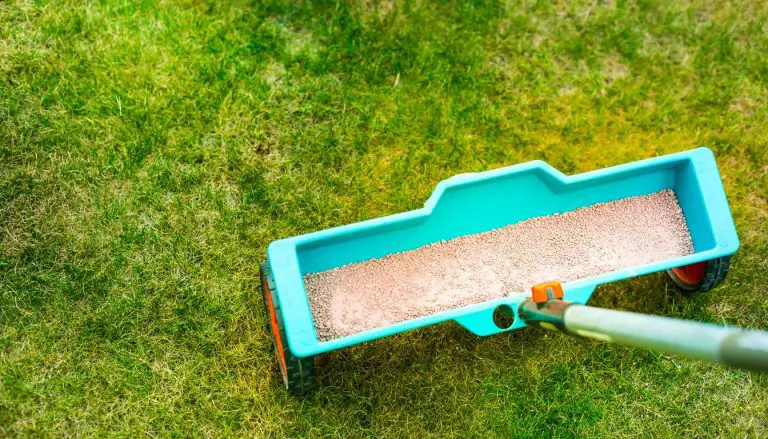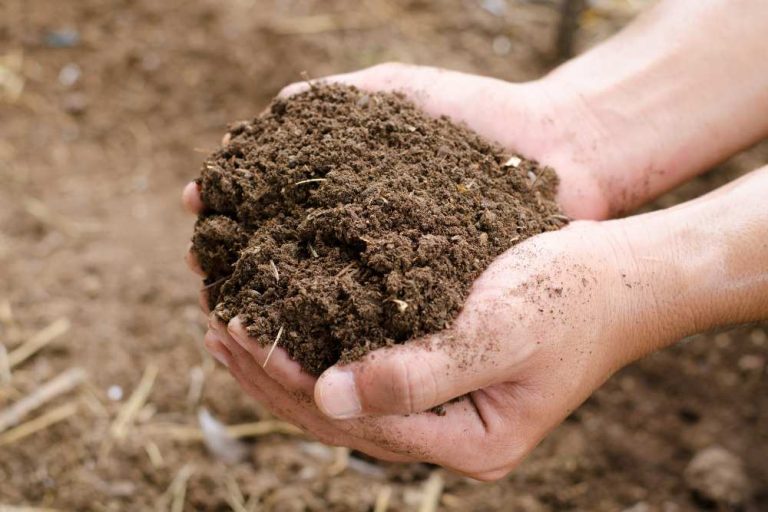8 Best Hydroponic Fertilizer for Vegetables – Choosing and Applying
All plants require various nutrients to thrive and produce fruit for us to consume. Growing plants in hydroponics might be complex if your plants do not receive the minerals they need. Most of us will only begin a gardening endeavor if we are confident that at least some of the plants we work on will thrive!
All hydroponically produced crops require a balanced fertilizer solution that includes macro and micronutrients. The three primary nutrients essential for plants to grow healthily are nitrogen (N), potassium (K), and phosphorus (P); however, plants require 18 nutritional elements to develop correctly.
The absence of any essential nutrient or mineral will impact the plant’s development. Numerous growing methods are available, and regardless of your choice, you can expect at least a small harvest if you properly care for the plants.
Hydroponics systems are an excellent technique to cultivate nearly any plant! The water and nutrients utilized to feed the plants are the keys to this growing technique’s effectiveness. Consider purchasing the best hydroponic fertilizer for vegetables if you want to save money.
The hydroponics method’s difficulty is ensuring that the nutrients are delivered through the nutrient-enriched water system in the proper amounts. Nutrient proportions will change depending on a number of variables.
Plant types, Plant development stages, Plant parts that you want to stimulate to grow, such as a leaf, fruit, or root, light intensity, weather, season, and temperature are all factors to consider. The plant does not need to extend its roots when growing in water because the water solution fulfills all of its needs.
As a result, the water should transport all that the plant requires. Regular tap water can be used in a hydroponics growing system, but the PH level needs to be changed by adding an acidic solution.
Any hydroponics system cannot use tap water because it has a PH level of 7.5 to 8.0. A hydroponics system’s PH values should be between 5.5 and 6.5. The only method to ensure proper nutrition levels is to test the water your system delivers regularly. The PH and EC (Electrical Conductivity) levels in the water can be easily tested with a basic water testing meter, which can be obtained at any hydroponics store.
How To Choose The Best Hydroponic Nutrient Solution
There are only a few things you must keep in mind. Let’s look at the guidelines that will enable you to choose the best hydroponic fertilizer for vegetables.
Liquid vs. Dry Nutrients
Liquid nutrition solutions are simple to use. If you’re a newbie, you should make your first purchase from this category for your first crops because all you have to do to get started is follow the directions provided on the packaging. Instructions for dry hydroponic fertilizers can be more complex.
Some may also require the addition of calcium nitrate and magnesium sulfate (Epsom salt) to the complete mixture, requiring the purchase of extra substances to be mixed into the water. However, one benefit of dry or powdered nutrients over liquid ones is that they are more economical in the long run. Buy a liquid one if this is your first time working with hydroponics or growing in small hydroponic indoor gardens.
NPK Ratio
Another factor to consider while looking for the best hydroponic nutrients is the NPK ratio. Some packages have three numbers inscribed across the top. These three numerals form the abbreviation NPK.
NPK fertilizer is named after its three macronutrients: nitrogen (N), phosphorus/phosphate (P), and potassium (K). These three macronutrients are critical in plant nutrition. Nitrogen is the most significant of the three due to its role in protein production, and plants absorb nitrogen more than any other element.
Nitrogen is the element responsible for leaf growth and the color green. Nitrogen keeps plants healthy as they develop and provides nutrients when we eat them. This is the most significant factor in cultivating leafy greens, herbs, and hydroponic lettuce.
Phosphorus allows plants to establish roots and produce seeds, fruit, and flowers. Phosphorus is essential for photosynthesis. It will enable plants to use and store energy, which allows them to grow correctly. Phosphorus is required more than nitrogen when plants bloom to produce fruit.
Potassium is the protector, enforcer, and regulator of growth rate. It boosts plants and helps them resist disease. It is critical to enhancing crop yields during vegetative and fruiting periods. If your plants become ill, additional potassium may be required to help fight the disease and enhance resistance.
Calcium Nitrate And Magnesium Sulfate
Other essential ingredients are calcium nitrate and Epsom salt. When plants develop in soil, they absorb the calcium they require. We must add it ourselves in hydroponics. Calcium nitrate is a water-soluble solution for providing calcium to plants. Calcium nitrate is mainly used for disease control.
Additionally, calcium helps the plant’s growth by providing new branches and roots. A package of calcium nitrate solution will contain either Ca + N or N + CaO + Ca. There are a few primary reasons why Epsom salt is the third required ingredient in a hydroponic solution.
The first two are micronutrient NPK fertilizer and calcium nitrate. To increase chlorophyll, Epsom salt (magnesium sulfate) is required. In addition to boosting the plant’s vigor and productivity, it eliminates nutrient shortages. Its pH neutrality also means it has no impact on the system’s pH.
Types Of Plants Grown In Hydroponics
The type of plants you’re cultivating is another thing to consider when selecting the best hydroponic nutrients. Nitrogen (N) and potassium (K) are the most critical components in the NPK ratio during the vegetative stage.
Nitrogen and potassium are the most crucial NPK ratio when growing hydroponic herbs, leafy greens, and lettuce require the most concentration. If you’re cultivating flowers or plants that need to produce fruits and seeds, phosphorus and potassium will be more important than nitrogen.
Phosphorus is the essential nutrient throughout the fruiting stage. Potassium is important, second only to phosphorus because it ensures fruit quality.
The phosphorus and potassium concentrations in the hydroponic fertilizer solution must be higher than those of nitrogen because the plant’s energy must be focused on developing and growing its fruits. There is no reason to use all that energy on developing large leaves, which nitrogen does. Calcium is also required to avoid blossom end rot.
Benefits Of Using Hydroponic Nutrients for Vegetables
Cost-Effective
The liquid or powdered hydroponic fertilizers for vegetables you purchase are typically quite concentrated and require mixing with water to achieve the proper concentration for your plants.
This means that you may get a lot out of a little and that your investment will last you for a very long time. You won’t need to purchase numerous nutrients to ensure that your plants’ nutrient needs are covered if you get an all-in-one hydroponic nutrient. Additionally, you won’t have to stress about how to combine hydroponic nutrients.
Fruiting And Flowering
Using hydroponic fertilizers for veggies will assist in producing a lot of blossoms and, eventually, fruits for you to enjoy if you are growing fruiting vegetables. The nutrients will ensure that your flowers and fruits form and develop properly, in addition to increasing the number of fruits and blooms.
Providing your hydroponic plants with the ideal ratio of nutrients that promote blooming and fruiting can help you get the enormous crops of tomatoes, peppers, and cucumbers you desire.
Healthy Roots
Hydroponic vegetable nutrients will ensure that your plants have strong and healthy roots. All plants require strong roots to survive, but vegetables produced hydroponically require extra care because they must take in all the nutrients from the water. Phosphorus and potassium are the most crucial hydroponic fertilizers for root growth.
Increased Harvest
Hydroponic nutrients for veggies will result in larger harvests than if you tried to grow your vegetables without the proper nutrients. You will be able to harvest more prominent and more vegetables to consume, share with family and friends, or sell. Providing the ideal climate for your plants’ growth requirements is also essential for a larger crop. Using a ventilation exhaust fan, you can ensure a well-ventilated environment with perfect humidity levels.
Leaves
Healthy and abundant leaves are necessary for all plants but essential for hydroponically grown leafy foods. Your leafy greens will only grow large and healthy leaves if you use the proper hydroponic nutrients for veggies.
8 Best Hydroponic Fertilizers For Vegetables
1. MasterBlend 4-18-38 Tomato & Vegetable Fertilizer
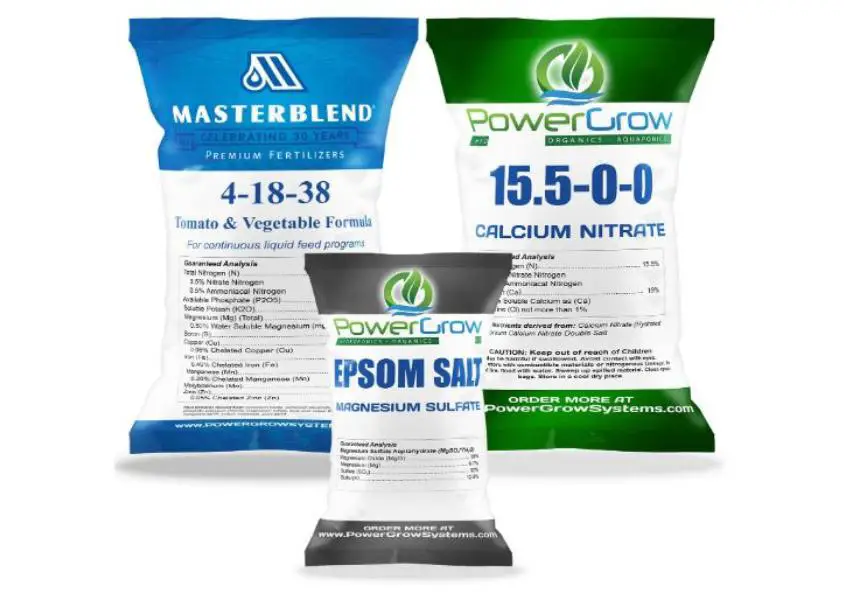
This is a 4-18-38 tomato formula suitable for hydroponic and soil cultivation. It’s rare to come across a nutrient that serves both purposes, but MasterBlend has created one of the best on the market. It says fertilizer for vegetables and tomatoes.
It means that it is ideal for hydroponic tomato cultivation. Furthermore, it works for every other plant you wish to grow, including lettuce, leafy greens, cucumbers, strawberries, eggplants, herbs, peppers, onions, and anything else you can think of.
MasterBlend 4-18-38 is an excellent product. It’s a water-soluble formula. Even in powder form, it dissolves quickly. It will not clog sprayers or fertilizer delivery systems. Nitrogen, phosphate (phosphorus), potassium (potash), baron, copper, manganese, magnesium, molybdenum, iron, and zinc are all included in this MasterBlend Fertilizer.
How To Use
- It requires two more ingredients: magnesium sulfate (Epsom salt) and calcium nitrate. It means you’ll have to buy magnesium sulfate and calcium nitrate individually. To prepare 100 gallons of water:
- Combine 224 g MasterBlend and 140 g magnesium sulfate.
- Dissolve these two completely.
- Add 224 g calcium nitrate to that mixture and stir until dissolved.
- MasterBlend 4-18-38 is ideal for growing in small or large hydroponic systems. Smaller systems will benefit from the 5-gallon recipe. 12g MasterBlend, 12g Epsom salt, and 2 tsp 12g calcium nitrate are required. There are two sizes available: 1-pound and 5-pound bags.
2. ALL BIO Organic Plant Food Starter Kit

This versatile ALL BIO – Organic Plant Food Starter Kit – Vegetable Garden Nutrients Kit can be utilized both indoors and outdoors, as well as for hydroponic and soil cultivation.
This nutrition kit will improve your plant’s overall health and increase productivity, allowing you to harvest more vegetables from each plant. This package includes three sets of fertilizers that will aid in the growth of your plants, as well as instructions on how to use them. All Bio also has nutrition tailored to flowers and herbs. This is a Dry Hydroponic Fertilizer.
How To Use
- Mix one teaspoon (1 gram) of the mixture in the bag with 1 liter of water for excellent results.
3. Microbe Life Hydroponics Yield Enhancer
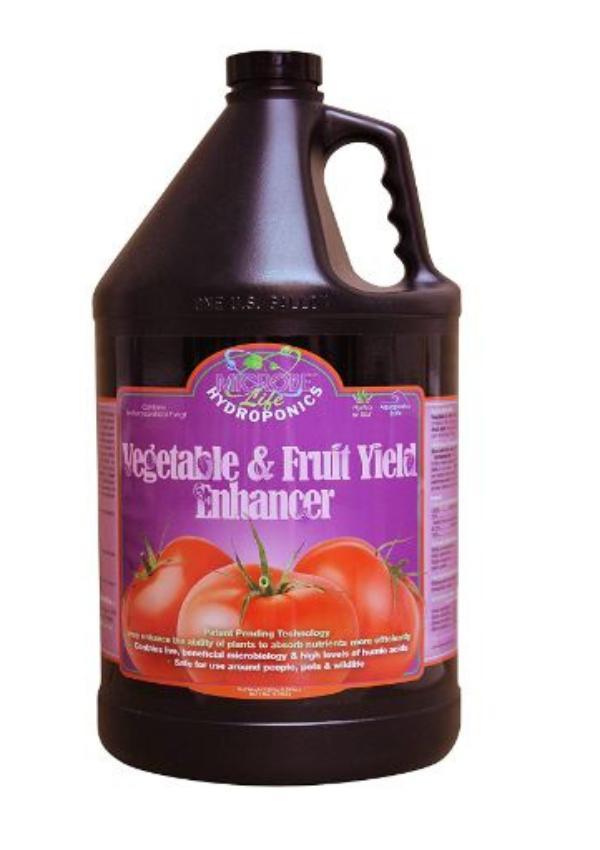
The Microbe Life Hydroponics Yield Enhancer is ideal if you’re producing fruiting vegetables and want to improve the number and size of veggies you can harvest. It balances the growing media you are using and is made of organic material.
This hydroponic fertilizer should be used in conjunction with other hydroponic nutrients. For vegetables as an additional nutritional boost to your plant. This hydroponic Nutrient comes in Liquid Form. Its Organic substances that are simple to use greater yields
How To Use
- Explicitly designed for foliar treatments, root dips, and root drenches; Applications for Foliar or Soil Drenching: Each gallon of water should include 1 to 2 ounces of Photosynthesis Plus. 1 to 2 liters of water per 1,000 square feet is recommended. Apply as a light soil or foliar spray at least once every two weeks or at your regular watering interval.
- Soilless Media or Hydroponics: Add 2 ounces per 5 gallons of water to the hydroponic system for a startup or initial use on existing plants. Following that, 1 ounce per 5 gallons is applied weekly or during water changes. Use 1 oz per 1/2 gallon of water for root dips. Soak the roots in water for 15 minutes.
4. Fox Farm Liquid Nutrient Trio Hydro Formula
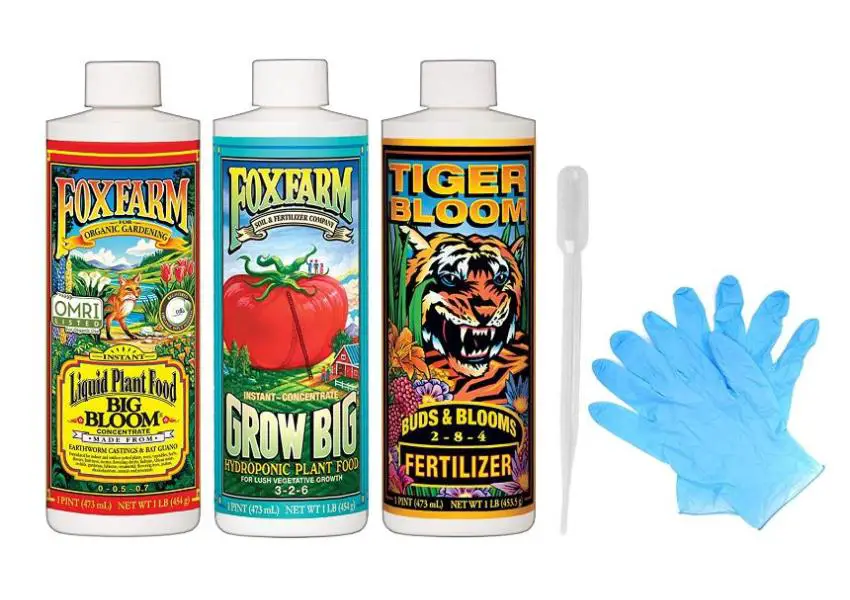
The three-part fertilizer formula of Fox Farm Liquid Nutrient Trio Hydro Formula aids in the growth and health of your plants. Plants require various amounts of nutrients at different stages of development. This is where Fox Farm Liquid Nutrient Trio may help. This three-part method is designed to provide plants with the nutrients they require at various stages of development. The end outcome is robust plants with big yields.
However, using an indoor hydroponic garden, such as those from iDoo or AeroGarden, works well for those smaller reservoirs. It also works whether you grow in mason jars (Kratky) or use a smaller DWC (deep water culture) system.
Grow Big Hydro
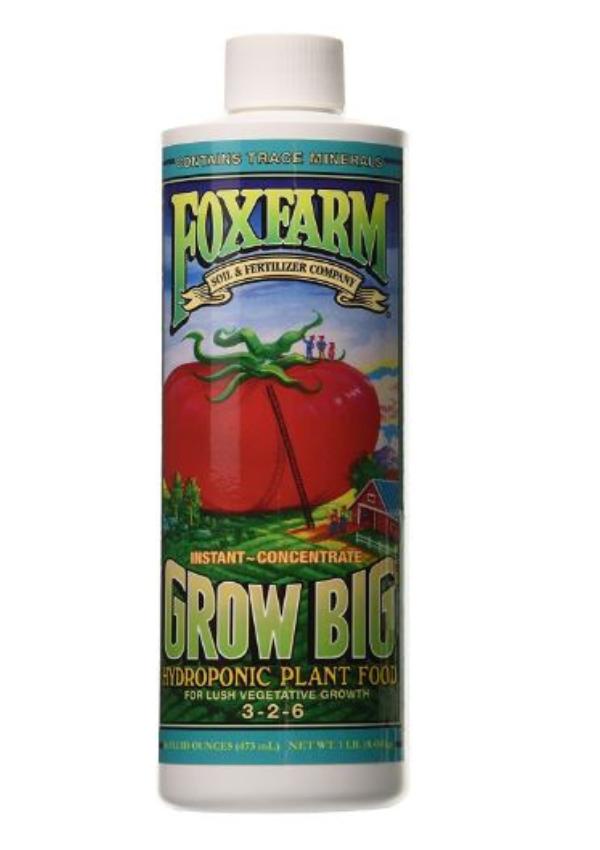
- Grow Big Hydro is ideal for producing greens or in the early stages of vegetable growth.
The Tiger Bloom
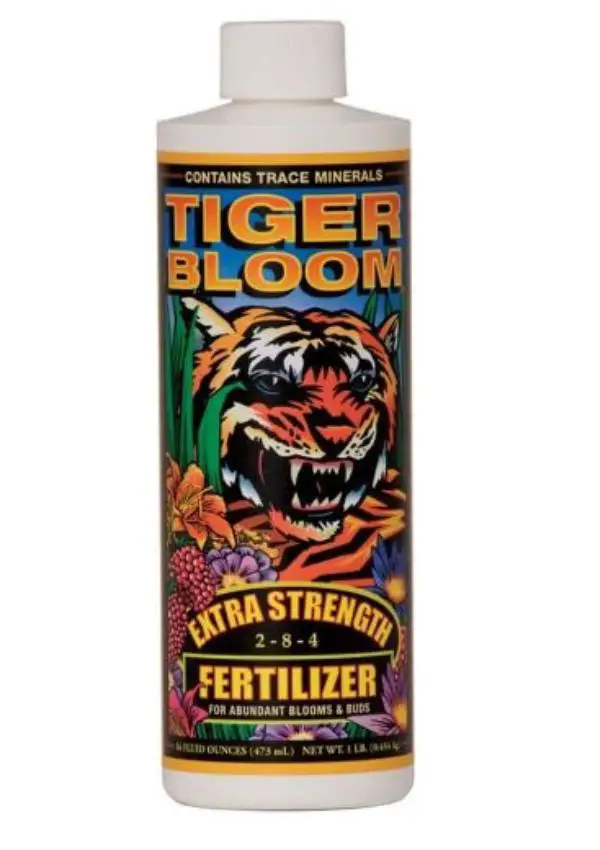
- If you’re producing fruiting plants like tomatoes, peppers, and cucumbers, Tiger Bloom will give you everything your plants require at that stage of development.
Big Bloom
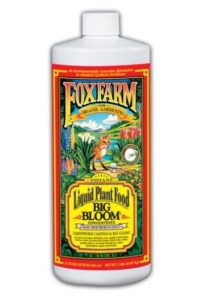
Big Bloom works during all growing cycles if you only use one of the components. Most people, however, wait until the fruit begins to grow before converting to Big Bloom.
How To Use
- Unless you’re cultivating plants that produce fruits, only get part of the set. The Tiger Bloom should be used at the first sign of bud set or blooming. This applies to the entire fruiting period. The Big Bloom strengthens root systems and improves nutrient cycling during all growing cycles. They’re simple to use, and the directions are clear.
- The first stage of development of leaves, stems, and roots. If you’re only growing lettuce, leafy greens, and herbs in your system, you can save money by purchasing the FoxFarm Grow Big Hydro separately.
5. AeroGarden Liquid Nutrients
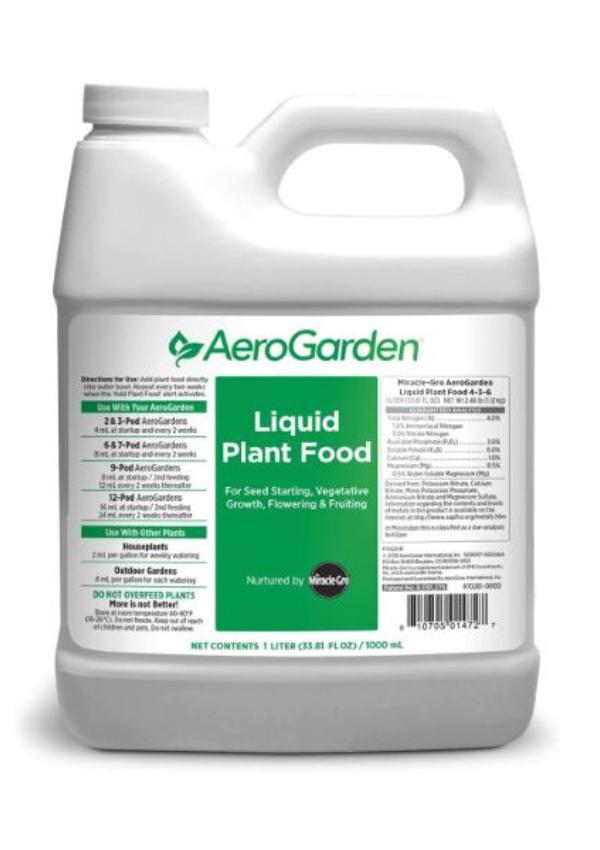
When it comes to purchasing the best hydroponic nutrients, those who utilize AeroGarden kits to cultivate their plants may be interested in their liquid nutrients. Any AeroGarden system comes with a bottle of the hydroponic nutrition solution.
It also works well with other manufacturers’ hydroponic indoor gardens, such as iDoo, Moisteland, Aerospring, and others. Some of these systems do not come with different nutrition solutions. If you want to start slowly with your first crop, the AeroGarden Liquid Nutrients is ideal. It’s perfect for beginners and relatively simple to use. You can choose between two sizes: a 3 oz bottle and a 33.81 oz bottle (1 Liter).
Purchasing a larger quantity saves you money. The amount recommended is determined by the number of pods in which we cultivate plants. We should replace our nutrition every two weeks with the same amount we used initially.
In general, if we are not using a pod-based system, we can use 4mL of AeroGarden Liquid Nutrients per gallon. This fertilizer can also be used to water houseplants. This is a Miracle-Gro AeroGarden Liquid Plant Food 4-3-6. It is effective for seedlings, vegetative growth, and flowering. It’s adaptable.
One of the best things about AeroGarden nutrients is that they last a long time, with more than 100 feedings in a one-liter bottle. You must supply your AeroGarden with nutrients every 14 days.
If you only have one “average” AeroGarden, a single bottle will last over two years. Fertilizer is AeroGarden fertilizers available to plants immediately. This guarantees that the fertilizer is fully absorbed by the plants, promoting healthy development. As a result, AeroGarden fertilizers are a quick and easy way to fertilize plants.
AeroGarden’s hydroponic nutrients are precisely made to deliver everything your plants require to thrive. They’re also easy to apply and won’t make a mess because they’re liquid. Best of all, AeroGarden’s fertilizers have a pH buffering mechanism that aids in pH equilibrium. A pH buffering system helps to balance the pH level of the water, reducing the issues associated with an incorrect pH level.
How To Use
- The feeding schedule is critical. Growing herbs, flowers, salad greens, or Mini Cherry tomatoes in six and seven-pod AeroGardens requires 8ml of nutrients (approximately two cap-fulls) every two weeks.
- Three-pod AeroGardens require 4ml of fertilizers (about one cap-full) every two weeks to guarantee healthy plant growth.
- Mega Cherry Tomatoes and Sweet Bell Peppers need 8ml of nutrients (about two cap-fulls) for the first two feedings, then 12ml per feeding (3 cap-fulls) after that (every two weeks).
6. General Hydroponics Flora Grow, Bloom, Micro Combo Fertilizer Set
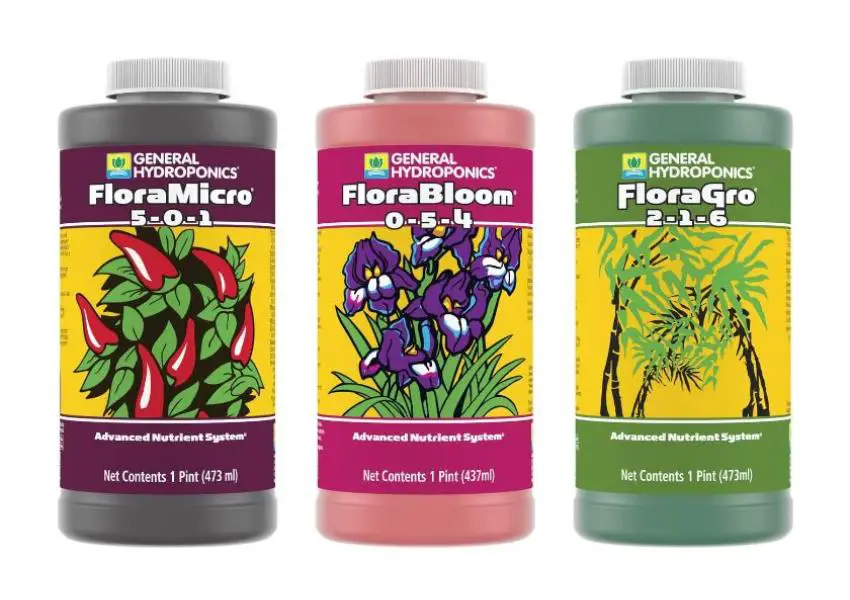
There are three bottles, as the name suggests: FloraGro, FloraBloom, and FloraMicro. Let’s look at why we get three bottles with such unique titles. FloraMicro has an NPK ratio of 5-0-1. Thus, the principal element is nitrogen, with no phosphorus and a trace of potassium.
This serves as the system’s foundation. It also contains calcium and trace minerals. FloraGro has an NPK ratio of 2-1-6. We get a small amount of nitrogen, no phosphorus, and a lot of potassium. This is advised for both structural and vegetative growth. It also helps to establish strong roots.
FloraBloom has an NPK ratio of 0-5-4. We get no nitrogen, a lot of phosphorus, and nearly as much potassium. It also has magnesium and sulfur in it. It is excellent for flower and fruit development, as the name implies. As a result, this will be employed throughout the fruiting period. This package from General Hydroponics comes in two sizes: 1-pint bottle (473ml) or 1 gallon per bottle (3.79L). So we get three bottles of high-quality nutrients for our hydroponics system.
The question is, how do you combine these three bottles with water? A straightforward method is to follow the instructions on the bottles.
7. MaxiGro and MaxiBloom
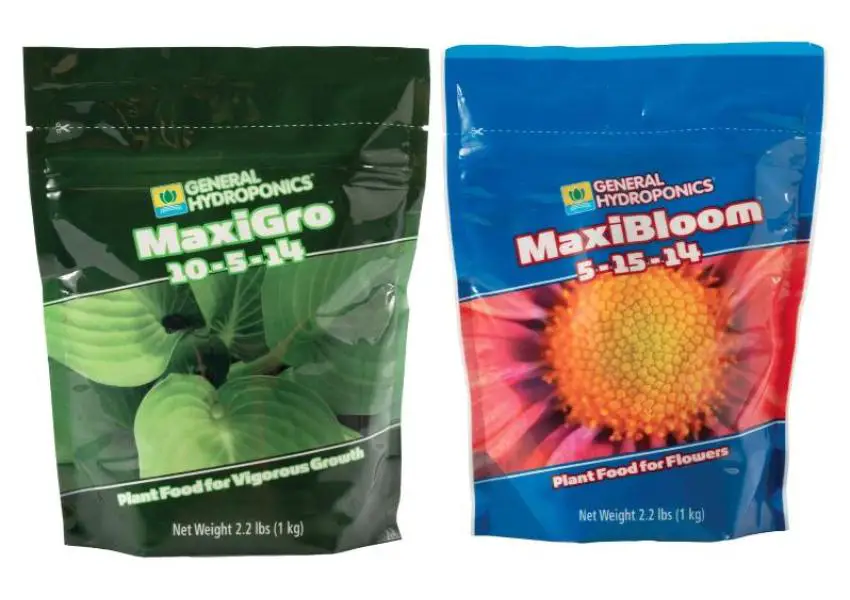
MaxiGro and MaxiBloom are two high-quality hydroponic nutrients that will aid in the growth of your indoor food garden. They can work with every hydroponic crop variety and stage of development thanks to their two different products.
A range of nutrients, including primary, secondary, and micronutrients, are required for healthy plants. MaxiGro and MaxiBloom are powdered formulae that supply a full spectrum of plant nutrients, unlike some hydroponic nutrients that only provide a small selection. This means you can be confident that your plants are getting everything they require to thrive.
Another advantage of MaxiGro and MaxiBloom is that they are designed to operate with different varieties of vegetables or at various stages of development. MaxiGro, for example, is the ideal nutrition blend for producing lettuce or plants.
MaxiGro is also effective for fruiting plants such as tomatoes and peppers in the early growth phases. However, once fruit starts to develop, MaxiBloom provides the ideal nutrient combination at that growth stage. As a result, you can be sure that you are providing your plants the best opportunity to develop into vigorous, healthy plants.
MaxiGro and MaxiBloom are two highly concentrated fertilizer preparations. Because they are so concentrated, you don’t need to use as much product to achieve the same benefits because a little goes a long way.
In the long run, you can save time and money by doing this, plus it’s better for the environment. MaxiGro and MaxiBloom are undoubtedly worth considering if you’re seeking a fertilizer that will produce fantastic results without costing an arm and a leg.
MaxiGro and MaxiBloom are designed to be easily stored. Because of their small size, they may fit in any location, and the resealable bags keep them fresh. Maxigro: For those just getting started with passive hydroponics, we recommend MaxiGro. Maxi Gro is a low-cost, easy-to-use product that produces excellent results.
Maxi Bloom
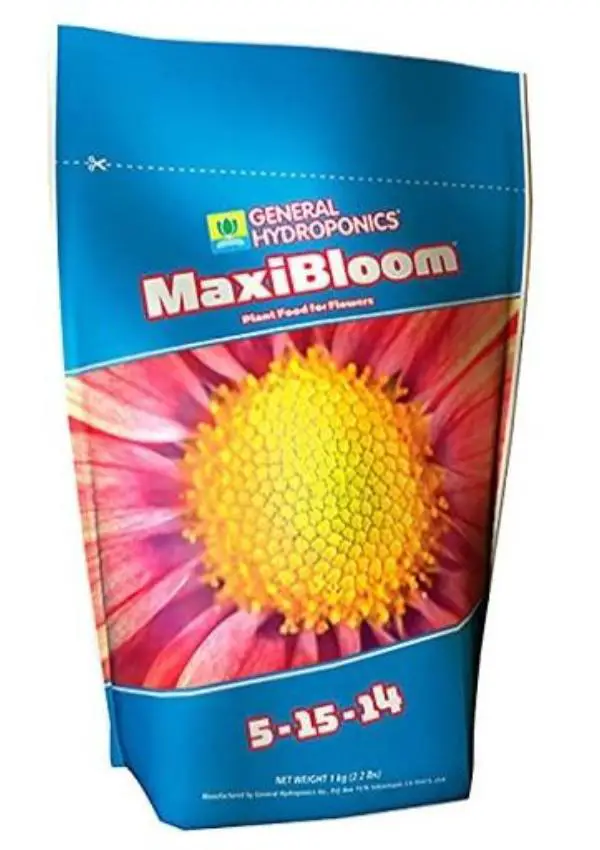
How To Use
- 1 to 2 tablespoons per gallon of fresh water. (5–10 g per 4 liters of fresh water)
- For Soil Apply fertilizer once or twice a week. Between applications, rinse with plain water. In hydroponics, replace the fertilizer reservoir every week. When growing plants, start with mildly concentrated nutrients and work your way up.
Maxigro
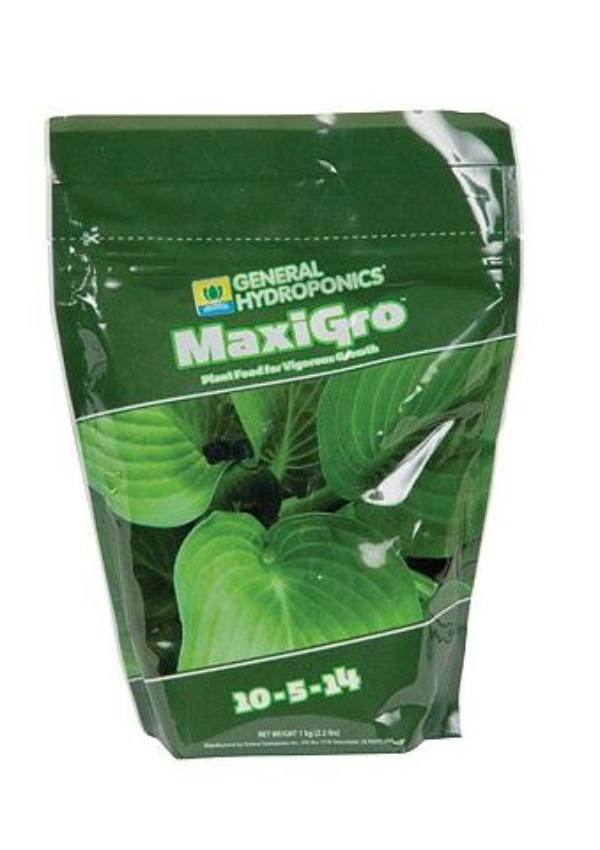
How To Use
- One teaspoon per gallon of water.
8. Blue Planet Nutrients | Calcium Magnesium Iron for Vegetables
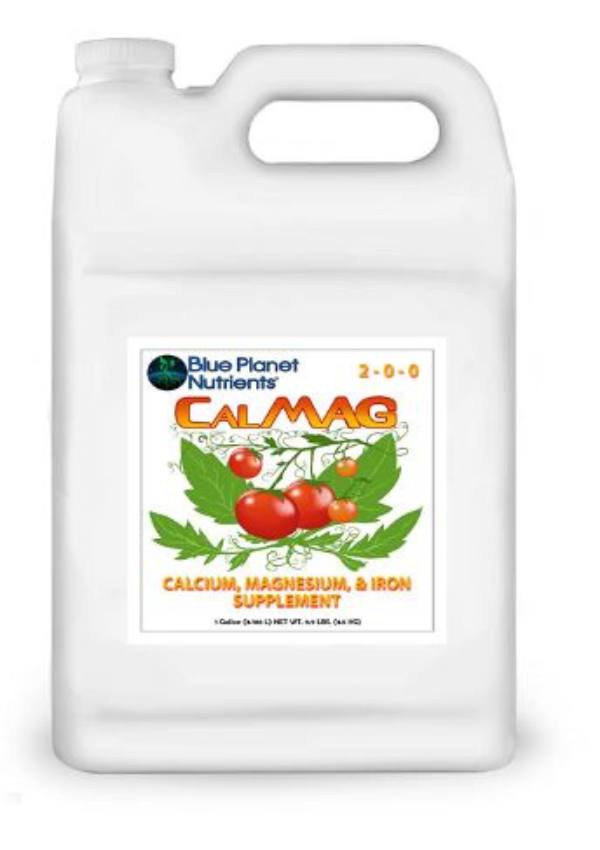
These nutrients from Blue Planet Nutrients | Calcium Magnesium Iron for Vegetables will benefit your plant in various ways. The nutritional mixture prevents blossom end rot, which causes blossoms to dry out before fruit can grow.
Your fruit-bearing vegetable plants will be able to produce more fruit because the flowers will be able to mature into healthy fruits if blossom end rot is avoided. In addition, these hydroponic fertilizers for veggies will improve nutrient uptake by plants and aid in efficiently utilizing those nutrients. This is a hydroponic Nutrient in Liquid Form. It is Simple to use.
How To Use
- Hydroponic/Aeroponic/Soil-Less Application
- For hydroponic plant growth, adjust and maintain the pH of the nutrient solution between 5.5 and 6.2.
- Maintain aeration of the nutritional solution.
- Every 7 to 10 days, the nutrient solution in the reservoir should be changed.
- Every two weeks, flush the system with fresh water to prevent nutrient buildup (optional)
- 20+ Chic Boho Bedroom Ideas for a Cozy and Stylish Retreat - June 20, 2024
- 12+ Modern Boho Living Room Ideas to Create a Unique Oasis - June 10, 2024
- 10 Stunning Canopy Bed Ideas for a Dreamy Escape - May 16, 2024

